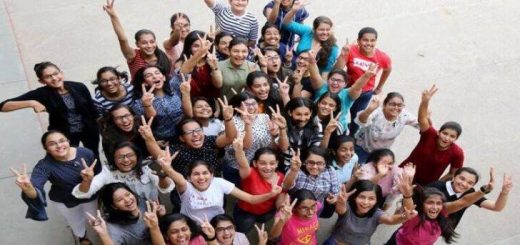Centre raises mid-day meal per child cooking cost by 9.6%
After a gap of over two years, the cooking cost per child under the mid-day meal scheme is set to rise by 9.6 per cent, with the Ministry of Finance approving the hike proposed by a committee which has recommended inter-ministerial deliberations on linking the number of LPG cylinders per school to enrolment, The Indian Express has learnt.
The decision, which is likely to come into effect from October, comes at a time school authorities and food rights activists across the country have been demanding more funds to run the scheme, which has 11.8 crore student beneficiaries, citing an increase in the prices of vegetables, pulses and cooking gas.
Since the last hike in early 2020, the cooking cost per child has been Rs 4.97 per child per day in primary classes (class I-V), and Rs 7.45 (class VI-VIII) in upper primary classes. After the hikes come into effect, the allocation at the primary level and upper primary levels will be Rs 5.45 and Rs 8.17, respectively.

 Mid-day meal cost over the years
Mid-day meal cost over the years
Cooking cost includes the prices of ingredients such as pulses, salt, vegetables, condiments, and fuel needed to prepare cooked meals.
“The cost of fuel is also a component of cooking cost. The current supply of LPG isn’t adequate, forcing schools to purchase from black market at inflated rates,” said a senior official.
The committee which revised the cooking cost has recommended that the Ministry of Education hold consultations with the Ministry of Petroleum and Natural Gas to ensure “reliable and adequate supply” of LPG cylinders by linking its availability to enrolment in schools.
The Education Ministry has also been advised to hold talks with the Food Ministry to “offset inflation on pulses”, which is the major source of protein in hot-cooked meals provided under the scheme, which is among the largest initiatives in the world to enhance nutrition levels of school-going children.
Between 2010-11 and 2015-16, cooking cost increased by 7.5 per cent annually. In 2016-17, it rose by 7 per cent, and during the subsequent year, there was no change. The same year a decision was taken to link the cooking cost to the Consumer Price Index.
Subsequently, it rose by 5.35 per cent in 2018-18, 3.09 per cent in 2019-20 and 10.99 per cent in 2020-21. Now, sources said, the government is likely to devise a new ‘PM Poshan Index’ to track the change in prices of items in the mid-day meal basket and revise the cooking cost annually.
Under the scheme, renamed as PM Poshan last year, most components including cooking cost are split in a 60:40 ratio between the Union government and the states and UTs with legislatures, and 90:10 with the Northeastern states, Jammu and Kashmir, Himachal Pradesh and Uttarakhand.
The cost of foodgrains is borne entirely by the Centre, which will have to shell out an additional amount of Rs 660 crore in 2022-23, while the states will spend Rs 400 crore more than what was sanctioned in the annual budget to implement the revised cooking cost.
The revision committee had members from the Department of School Education and Literacy, NITI Aayog, National Institute of Nutrition, Ministry of Labour, among others.



